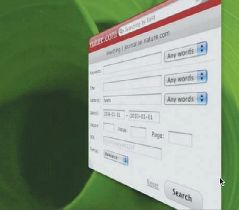Service enables applications to search journals
In October 2009, Nature Publishing Group (NPG) launched a new service to allow remote searching of the nature.com platform via nature.com OpenSearch. We ask Tony Hammond, application architect at NPG, what the new service is all about

What is the new service?
Nature.com OpenSearch is a sister service to the regular nature.com search service, which allows a user to query nature.com and browse the result sets. The new service allows ‘applications’ to query nature.com and to fetch the results back in formats of their own choosing.
Nature.com serves as a gateway to all of the content published by NPG, and the site search runs across all 80 plus journals on nature.com, including Nature. All of the data available to the regular nature.com search is available via the nature.com OpenSearch interface, enabling applications to query articles from all journals on nature.com, plus content from Nature News. Search results are free, and there is no subscription charge to use the interface, although the usual access controls apply to full text of articles.
How does it work?
The interface was inspired by the dual goals of maximising usability of nature.com data, and finding ways to speed enhancement of the website. Nature.com OpenSearch improves the availability of nature.com article metadata to research and information communities. NPG expects its own developers to use the interface, so new tools and functionality can be developed more quickly. NPG also hopes to provide a more general public metadata application programming interface (API) for nature.com, like those existing for Facebook, PubMed and other services.
Nature.com OpenSearch is not a user application itself, but is rather a piece of infrastructure. It implements a public interface, and takes advantage of open standards, using the Search and Retrieve via URL (SRU) protocol. It also supports the industry-standard OpenSearch conventions for accessing search engines. This means that although NPG’s data is proprietary, the technology to make use of the nature.com OpenSearch interface is not, and developers, librarians and researchers can build tools using open standards.
How will it be used?
Applications are the immediate clients of nature.com OpenSearch, rather than the end user, although NPG expects librarians and researchers to benefit too. Applications including widgets, mobile agents, mashups and web pages could potentially use nature. com OpenSearch to generate useful tools and visualisations of nature.com content.
The interface could, for example, be used by agents, services that carry out background tasks for the user and integrate with other services to provide rich functionalities.
It could also be used for federated searches, integrating nature.com results into a results page from a metasearch engine that queries multiple databases to return a unified set of results to the user.
Another option is mashups. Nature.com search results could be layered on top of other sources of content so that search results are embedded in pages from other content providers.
The interface could also enable the nature.com database to be searched from a dedicated application on a mobile device or smartphone.
To demonstrate the new service, NPG has developed nature.com search desktop widgets. The widgets allow users to search nature.com without visiting the website. Searches are constructed on the widget, and sent to the nature.com OpenSearch service for processing. Results, including links back to articles on nature.com, are returned and can be browsed on the widget.






